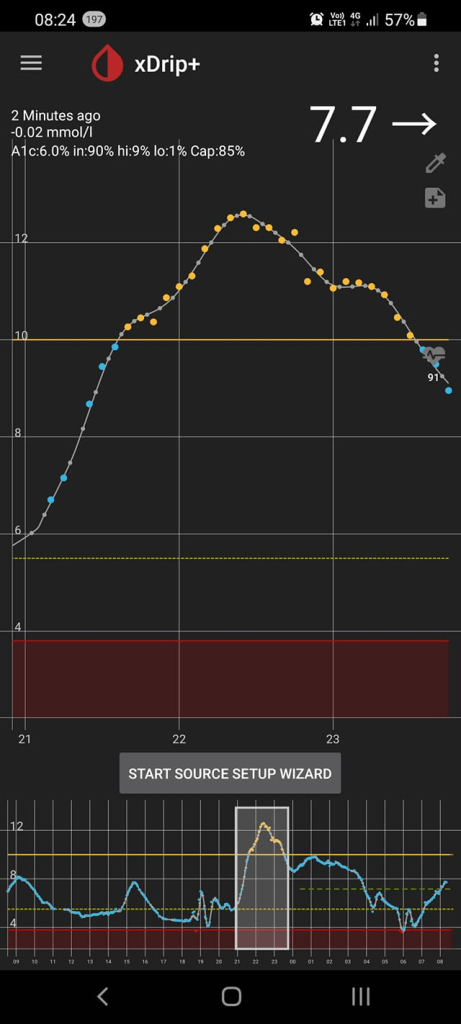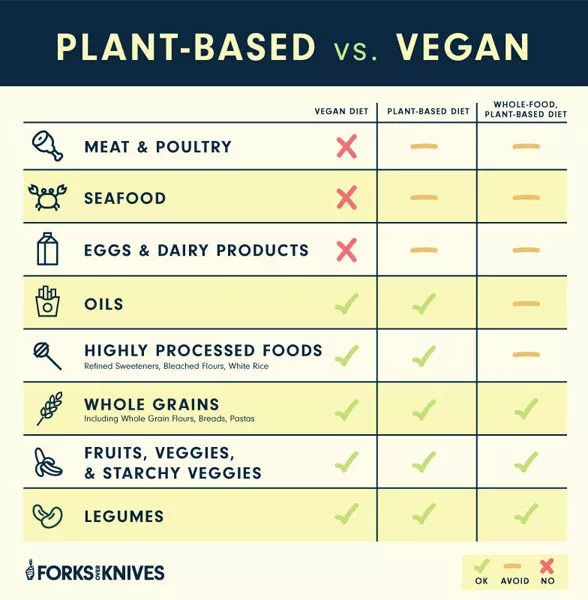This week was my fifth diaversary. It is a word you will not find in the dictionary and is used exclusively in the diabetes community. In short, it is five years since I was diagnosed with Type 1 diabetes.
It may seem a strange thing to celebrate, the acquisition of a chronic, damaging, sometimes fatal disease but it is important, at least to me.
To celebrate I went all out with Italian:
- Half of a 14″ meat-lovers pizza
- 4-inch square of lasagne
- half a garlic bread roll
- single serve of tiramisu
A nightmare to manage for most Type 1s. Being a honeymooning LADA, albeit an insulin-independent one, helped although I still spiked, peaking at around 12.2mmol/L (220mg/dl) and then headed down.

So why subject my body to such a stress? Because sometimes it is the healthiest thing you can you do for yourself.
My Usual Eating Routine
I characterise my diet at “lowish carbohydrate”. Where there is an obvious, practical low/no carbohydrate alternative to a food, I will eat it. I do not drink sugary drinks, opting for the ‘diet’ alternatives. I am very comfortable with sugar substitutes such as phenylalanine and sucralose. As a general rule I try to make sure anything solid I eat has 10% net carb or less and, for liquids, zero carbs. That is it.
The result, when I stick to this, are blood glucose traces like this.

The thing is, even with these relatively light rules, it still requires commitment and effort to maintain. If I am eating out, I need to scan the menu for the friendliest options. I need to make sure, if I order a soft drink, that the diet version has been served and not its sugar-filled cousin and so on.
Other Common Eating Regimens
Other common eating regimens for people with diabetes are even stricter. If we consider Bernstein’s approach we are eating:
- 30g of net carb or less per day
- Roughly the same amount of carb every day for breakfast, lunch, and dinner e.g. 6g, 12g, 12g
- Eating at roughly the same time every day
That is a lot to keep on top of and while I am sure the ‘Gritters’ will say it is not a big deal and worth it because “we deserve normal blood sugar levels” there is no doubt it does require effort and will impact social interactions with those not complying with this routine.
The strictest of all is probably the zero-carb carnivore diet. This pretty much speaks for itself; if it was not once part of an animal (or is a drink with practically no calories) it is off the list.

At the other end of the spectrum we have the Forks Over Knives advocates, where eating involves a “plant-based diet”. In short a “small v” vegan diet where no foods are off-limits but some (those from animals) are to be avoided.
This one is relatively friendly and, for those looking to reduce insulin resistance the benefits of avoiding animal fats may outweigh the additional carb intake.

Whatever system that is followed, assuming a person with diabetes is adopting some kind of food management, rules mean conscious effort.
The Risk To Mental Health
Orthorexia nervosa is defined as “an unspecified feeding or eating disorder characterized by an exaggerated, unhealthy obsession with healthy eating”. “The affected individual might be driven by dietary asceticism, cherry-picked evidence, or even by evidence-based recommendations, leading to a restrictive dietary pattern in pursuit of improved health”. Overly strict diets which individuals religiously follow, and myths about the food we eat feed, reinforce this kind of unhealthy thinking.
Another aspect is willpower (also known as volition) is a finite resource. A person can only perform conscious actions for so long before they need to take a break. A person with diabetes is ‘on’ 24-7 (except possibly the closed loopers but they are still the exception rather than the rule). They know that maintaining their blood sugar is necessary to stay alive and stay healthy. So what happens when they run out of willpower to manage their disease? Diabetes Burnout. They simply stop managing the disease because they need to take a break.
Obviously there is a lot more to managing diabetes than food intake but it certainly contributes and can be overly burdensome when it becomes all-consuming.
Food Myths Which Contribute To Orthorexia And Diabetes Burnout
There are a few myths when it comes to blood sugars and food which focus on 140mg/dl (7.8mmol/L)
“Damage Starts Happening When Your Blood Sugar Goes Over 140mg/dl”
I tackled this in a previous blog. In short, there is no evidence that damage begins over 140mg/dl. There is literally no study which has examined people with blood sugars at 141mg/dl and observed cellular damage occurring. It is a myth used to sell books but has no basis in scientific fact. It is true that having a sustained high blood sugar will do damage in the long term but this is better measured through metrics such as the HbA1c or Time in Range (TIR).
“Muggles (Non-Diabetic Folk) Never Go Above 140mg/dl”
This is simply not true. A recent article gave a great summary of some of the research that has been done in this area. Here are quotes from the studies examined:
- Muggle Study #1: “On average, their daily glucose levels stayed between 70–140 mg/dl for 93% of the day, with very small portions of the day spent above 140 mg/dl or below 70 mg/dl”
- Muggle Study #2: “Levels were lower than 70 mg/dl for 1.7% of the time and greater than 140 mg/dl, only 0.4% of the time.”
- Muggle Study #3: “Participants spent 93% of time between glucose values of 70-140 mg/dl, with 3% of the time below 70 mg/dL on average and 4% of the time above 140 mg/dl on average”
- Muggle Study #4: “2.1% of glucose sensor values were >140 mg/dl”
- Muggle Study #5: “Glucose was above 140 mg/dL for only 0.8% of the day”
- Muggle Study #6: “Participants spent 1.6% of the time above 140 mg/dl”
Literally every study showed that while going above 140mg/dl was the exception, even Muggles do it for short periods of time every day.
In other words, not only are these myths untrue, anyone believing them is putting themselves under unnecessary mental stress for effectively no discernible gain.
Diaversary As A Mental Steam-Release Valve
This is why I celebrate my diaversary. My diaversary is a day when I give myself permission to not to be as concerned with my blood sugars, secure in the knowledge that one day of spiking is going to do little but give me a mental break and help me recharge for the other 364 days. I genuinely believe the one day of poor bloods is a small price for sustained mental wellbeing. While maintaining healthy blood glucose levels is important, so is managing my mental health. My diaversary is a key element in my approach.
2 thoughts on “My Fifth Diaversary, Why I Celebrate It, And The Health Benefits Of A Carb Blowout”